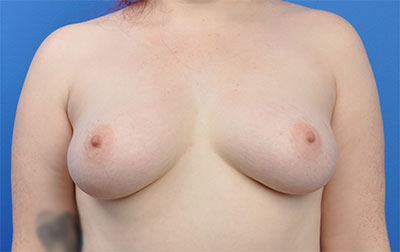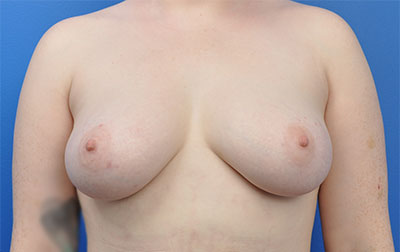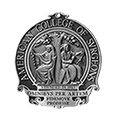Breast Fat Graft Chicago
Fat grafting is a technique for breast augmentation that involves taking excess fat from other parts of the body, purifying it, and injecting it into the breasts to give them more volume with a natural appearance.
Also known as fat transfer or fat injection, fat grafting is a safe and long-lasting procedure that is often considered as a supplement or even an alternative to breast implants. The results of fat grafting are natural-looking; however, it is also a fairly complex procedure, since the integrity of the fat cell membranes must be kept intact.

AM I A CANDIDATE FOR FAT GRAFTING?
Fat grafting is a breast-augmentation technique that provides a subtle enhancement in breast size; it is an ideal option for women who are seeking a relatively small increase, or for women who have asymmetrical cup sizes.
An additional benefit to fat grafting is that it involves taking excess from your own body and does not involve any foreign substances. If you have any known allergies to implant materials, you may be an ideal candidate for fat transfer.
In order to be a candidate for fat grafting, you must have a donor site from which excess fat can be taken, such as the thighs or abdomen. Your board-certified plastic surgeon can help you identify the best donor site.
With any plastic surgery procedure, it is always important to choose a board-certified plastic surgeon that has extensive experience and knowledge in their field of study. Fat grafting is no exception; though it may sound like a simple process, careful cultivation of the fat cells is of the utmost importance to achieve optimal and lasting results.
WHAT TO EXPECT FROM YOUR CONSULTATION
At the Plastic Surgery Clinic of Chicago, our board-certified plastic surgeons have performed hundreds of fat-grafting procedures successfully and safely. Our focus is on natural results and the newest, most innovative techniques. When you choose us, your consultation will involve reviewing every step of the process, all the way through recovery, so that you have a comprehensive understanding of what fat grafting entails.
You and your plastic surgeon will review your medical history to ensure that you are an ideal candidate for fat grafting. Your plastic surgeon will examine and measure your breasts, including the size, shape, skin quality and nipple position. Photographs are usually taken at this stage so your plastic surgeon can perform a full evaluation and work with you to determine the best course of treatment to reach your ideal aesthetic goals.
You and your plastic surgeon will discuss any and all aspects of the procedure, through recovery, as well as any potential risks associated with breast augmentation. If you have any questions about any of these factors, you should not hesitate to ask; the consultation is the best time to have all your questions answered.
HOW IS FAT GRAFTING PERFORMED?
First, you and your surgeon will determine the donor site, from which excess fat will be removed. After a general anesthetic is administered, the surgeon will make a small incision in the donor area and carefully extract fat cells using a cannula and syringe.
If necessary, the extracted fat will be processed using a centrifuge or other filtration technique to isolate the fat cells. The fat cells are then transferred to smaller syringes to be injected into the breasts.
The injection process is repeated until the desired results are achieved. Since this process also involves shaping and contouring, there is an artistic aspect to fat grafting in order to create an aesthetic breast, which is why it is important to choose an experienced, board-certified plastic surgeon who understands your aesthetic goals.
Fat may be injected after an implant is placed to improve overall shape and contour, if the fat transfer is being performed as an adjunct to implants. Finally, a bandage is placed over the grafted area. In some cases, a drain may need to be placed at the donor site.
RECOVERY AFTER FAT GRAFTING
The only incisions resulting from fat grafting are at the donor sites, and these incisions are typically very small and produce minimal scarring. If possible, your surgeon will attempt to place the incisions in well-hidden areas of the body.
Swelling and bruising of both the donor site and breasts should go down significantly between the first and second week after the procedure. Be prepared to wait at least seven to ten days before returning to your normal level of activity. By the third week, swelling should be mostly gone and results should be apparent.
POTENTIAL RISKS ASSOCIATED WITH FAT GRAFTING
Complications from breast augmentation with fat grafting are infrequent, but there are associated risks with any surgical procedure, even those that are noninvasive. Potential risks associated with fat grafting may include:
- Adverse reaction to anesthesia
- Changes in skin sensation
- Infection
- Hematoma (blood clot)
- Scarring
At the Plastic Surgery Clinic of Chicago, we take every precaution possible to minimize risk by using only the safest, most innovative techniques. You can also reduce risk by adhering strictly to any instructions that your plastic surgeon may give you, both before and after your procedure.
HOW MUCH DOES FAT GRAFTING COST?
The cost associated with breast augmentation by fat grafting varies widely—not only according to your geographic location and surgeon, but also your particular goals and the extent of the procedure. Your plastic surgeon will discuss all associated costs during your consultation. Fat grafting is considered a cosmetic procedure, and is rarely covered by health insurance providers.
SCHEDULE A CONSULTATION
If you believe you are a candidate for fat grafting breast augmentation or would like to learn more about the procedure and how it is performed, schedule a consultation with the Plastic Surgery Clinic of Chicago. We will be happy to speak with you and perform an evaluation to see if it is a right fit for you and your aesthetic goals.
All surgical procedures by the Plastic Surgery Clinic of Chicago are performed at top hospitals in Chicago and CMS or AAAASF-certified surgical centers for safety.
GOOGLE REVIEWS
JOIN US ON INSTAGRAM
As the seasons change, so should your skincare! Fall is all about keeping your skin hydrated as the air gets cooler and drier. Here’s a go-to fall skincare routine you can reference when swapping out your summer products to help your skin thrive: 🍂
1. Start with a hydrating cleanser
2. Use a toner to remove any excess dirt, oil, makeup, and residue
3. Incorporate a gentle retinol
4. Boost brightness with a Vitamin-C serum
5. Swap your lightweight moisturizer for a richer, thicker formula
6. Don’t skip the SPF (yes, even in fall!)
7. Take care of your lips with a nourishing lip balm
8. Moisturize your hands with a thick hand cream
#Explore #Explorepage #discoverunder100k #FallSkincare #FallSkincareRoutine #SeasonalSkincare #SkincareRoutine #SkincareTips #Skincare101 #SkincareHacks #GlowUp #PlasticSurgeon #Chicago #ChicagoPlasticSurgery #ChicagoPlasticSurgeon #FallSkin
This is a 3 month follow-up for an otoplasty or ear pinning procedure. The patient was bothered by how far his ears projected forward and how his ears were a major focus of his appearance. In the post-operative photos, the ears have been re-positioned in a more aesthetic and natural way. The patient’s facial features now become the focal point of his appearance and not the ears. A relatively simple yet powerful procedure. Posted with permission.
#plasticsurgery #plasticsurgeon #cosmeticsurgery #otoplasty #earpinning #chicago #chicagoplasticsurgery #chicagoplasticsurgeon
This is a 2 year follow-up revision rhinoplasty case. The patient had had 2 prior rhinoplasties in the past and was bothered by the nasal deviation, the dorsal hump, and the under-rotated and under-projected tip. In the post-operative views, you can see the nose is straighter, symmetric dorsal aesthetic lines have been established, the dorsal hump was removed, and the tip was elevated and rotated. It’s amazing how a more symmetric and proportional nose improves the balance and overall aesthetics of the face. Posted with permission.
#plasticsurgery #plasticsurgeon #cosmeticsurgery #nosejob #revisionrhinoplasty #rhinoplasty #chicago #chicagoplasticsurgery #chicagoplasticsurgeon #explore #explorepage
This is a great example of how buccal fat removal changes the face. Buccal fat removal involves removing fat from the lower cheeks and the purpose is to narrow the lower 1/3 of the face. With removal of the buccal fat pad, the face appears less round and more angular or V-shaped. Buccal fat removal was popularized and trending during the pandemic, however, not everyone is a good candidate for this procedure. Ideal candidates are younger patients in their 20-30’s with a rounder face, and excess volume of the lower cheeks. As we age, the face loses volume and therefore patients in their 40’s plus may not be good candidates. An article in our journal from 2021, The Role of Buccal Fat Pad in Facial Aesthetic Surgery, by Drs. Rohrich and Stuzin, highlighted that this procedure can be beneficial in certain patients but if over resected or performed in the wrong patient, can lead to premature aging and midface distortion. Posted with permission.
#explore #explorepage #plasticsurgery #plasticsurgeon #cosmeticsurgery #buccalfat #buccalfatremoval #chicago #chicagoplasticsurgery #chicagoplasticsurgeon
How important is the chin in a rhinoplasty case? This patient’s results show how important the nose-chin relationship is for a balanced and proportional profile. This patient had a crooked nose, a prominent dorsal hump, and a very deficient chin. After straightening her nose, removing the dorsal hump, lifting and refining the tip, and performing a sliding genioplasty; look how much her profile has changed aesthetically for the better.
#plasticsurgery #plasticsurgeon #cosmeticsurgery #rhinoplasty #genioplasty #chinaugmentation #chicago #chicagoplasticsurgery #chicagoplasticsurgeon #explore #explorepage #discoverunder100k #nosejob #nosejobbeforeandafter
Thinking about getting a rhinoplasty? Here are some things you should know before getting this procedure!
1. Are you physically and mentally ready for a rhinoplasty and recovery process?
2. Can you articulate what your rhinoplasty goals are and are they realistic?
3. Have you found the right surgeon and practice to get you where you want to be?
If you have any questions, leave them down below!
#plasticsurgery #plasticsurgeon #cosmeticsurgery #nosejob #rhinoplasty #chicago #chicagoplasticsurgery #chicagoplasticsurgeon #nosejobcheck #rhinoplastyquestions #explore #explorepage #discoverunder100k
In facial feminization surgery, a common question we get is how do we contour the forehead and orbital rim. There are two main techniques that craniofacial surgeons utilize. A type 1 technique is where we use a burr or shaving device to shave and contour the bone to set it back or make it less prominent. To be a good candidate for this technique, one would have to have thick bone, a smaller frontal sinus, and less frontal bossing. A type 3 technique is where we use a saw to cut off the outer part of the frontal sinus bone, shave down the forehead and then replace the bone with titanium plates and screws. Good candidates for this procedure are patients with thin bone of the frontal sinus, a large frontal sinus and significant frontal bossing. We determine which technique would best achieve a patient’s goals through a clinical exam and a CT scan. Posted with permission. Videos are educational.
#explore #explorepage #discoverunder100k
#plasticsurgery #plasticsurgeon #cosmeticsurgery #facialfeminization #ffs #feminization #chicago #chicagoplasticsurgery #chicagoplasticsurgeon #facialfeminizationsurgery
Is it a good night’s sleep, filler, or surgery? These patients underwent a lower blepharoplasty procedure, and in the post-operative photos, you can see an improvement in the contour of the lower eyelids, no more bags, and reduced dark circles. The results? A brighter, more youthful, and refreshed appearance. Posted with permission.
#explore #explorepage #discoverunder100k
#PlasticSurgery #PlasticSurgeon #CosmeticSurgery #Blepharoplasty #EyelidLift #Chicago #ChicagoPlasticSurgery #ChicagoPlasticSurgeon #BlepharoplastyTransformation #PlasticSurgeryTransformation #GlowUp #lowerblepharoplasty #blepharoplastysurgery









